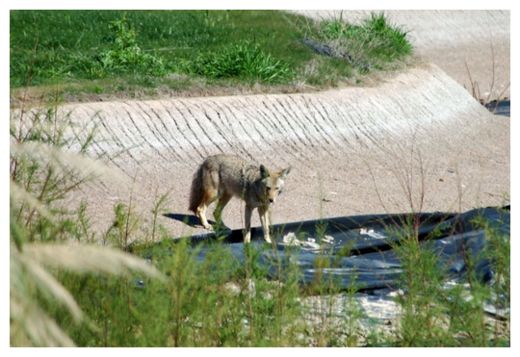
© Bobby Deal / RealDealPhoto / Shuttertock
Urban coyote populations could be just the beginning of animal predators making their way towards the big cities.
Scientists have located a coyote territory about five miles from Chicago O'Hare International Airport that has been around for at least six years.
"That's an indication that they don't have to go far to find food and water. They're finding everything they need right there, in the suburbs of Chicago," Stan Gehrt, an associate professor of environment and natural resources at
The Ohio State University, said in a statement.
He said coyotes are the largest of the mammalian carnivores to have made their way to urban settings.
"The coyote is the test case for other animals. Raccoons, skunks, foxes - they've already been able to penetrate the urban landscape pretty well," he said in the statement. "The coyote is the most recent and largest. The jury's out with what's going to happen with the bigger ones."
The bigger predators that may move into urban settings could one day include wolves, mountain lions and bears. Mountain lions have already been spotted before near the Wrigleyville neighborhood of Chicago.
"They are going to be an even bigger challenge," Gehrt said.
Gehrt and his team have been able to capture and track about 680 coyotes since they began bagging and tagging them in 2000. He believes that about 2,000 coyotes live in the Chicago metro area, along with 9 million people in 250 separate municipalities.
"It used to be rural areas where we would have this challenge of coexistence versus conflict with carnivores," he said. "In the future, and I would say currently, it's cities where we're going to have this intersection between people and carnivores."
He said scientists used to think only smaller carnivores were capable of living in cities, and even then they thought the animals couldn't achieve large numbers.
"But we're finding that these animals are much more flexible than we gave them credit for and they're adjusting to our cities," Gehrt said in the statement. "That's going to put the burden back on us: Are we going to be able to adjust to them living with us or are we not going to be able to coexist?"
When the study began in 2000, several communities around Chicago started programs to trap and kill coyotes found within their boundaries. However, Gehrt said those programs would go away.
"It costs money, and it upsets some residents who want coyotes living there. So there is conflict, cost and lack of effectiveness," he said.
According to Gehrt, there is plenty of data in areas where removal was done to show that once some coyotes are moved out, new ones move in and set up a new pack.
He said that one reason humans have flocked to the big cities rather than the country side is to get away from the risks associated with living near wild carnivores.
"The funny thing is that now we have more people on earth and bigger cities than ever, we also now have carnivores moving into cities. It's a two-way street: We're expanding cities into their territories and they're also coming in," said Gehrt.
The researchers found that the urban coyote pup survival rate is five times higher than the rate of rural pups. Gehrt said that humans are the only things to slow the coyote growth down.
"We are the only thing slowing their population down, either with our cars, which is the No. 1 cause of death for coyotes, or when we remove them through hunting or control programs," he said in the statement. "None of the diseases they're exposed to really impact them at all."
Coyotes eat rodents, rabbits and geese, enabling humans to be less exposed to diseases carried by those species. There is plenty of opportunity for food in the urban areas and, once coyotes settle in, they don't move much.
"They're so adaptable and so opportunistic," Gehrt said in the statement. "In adjusting to urban life, they may change dietary items and habitat use, and become nocturnal, whereas in the country they're active day and night. But with other things, they don't change at all. Here, they're able to maintain their social structure, territorialism, packs and mating system, even in the face of all these challenges of trying to live among 9 million people."
Gehrt described the research on Friday at
EcoSummit 2012, which is an international conference held in Columbus.
Reader Comments
to our Newsletter